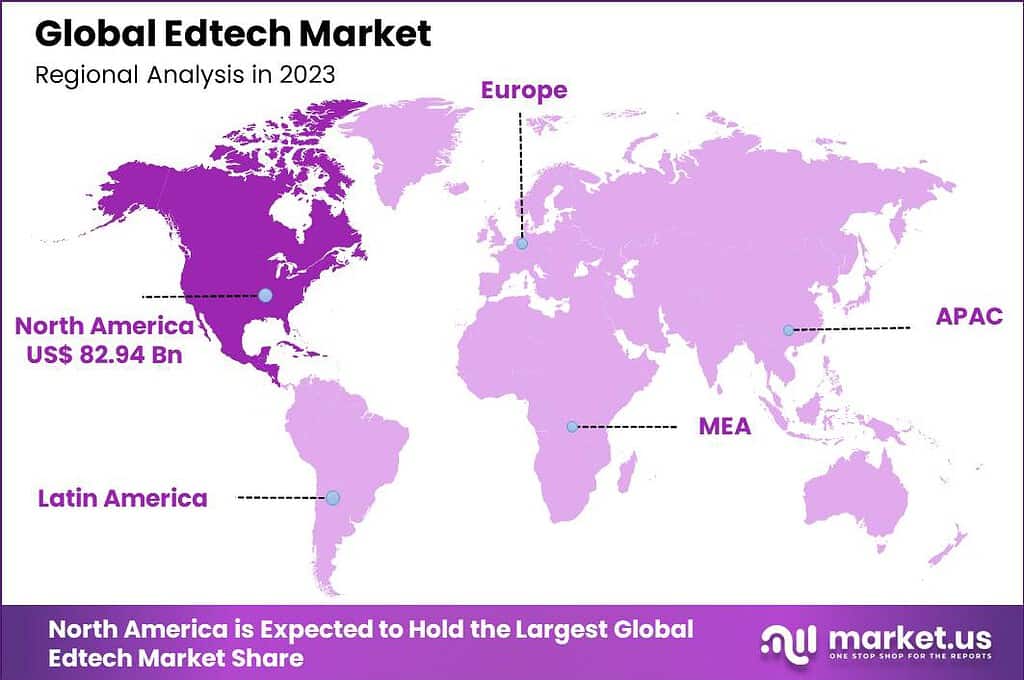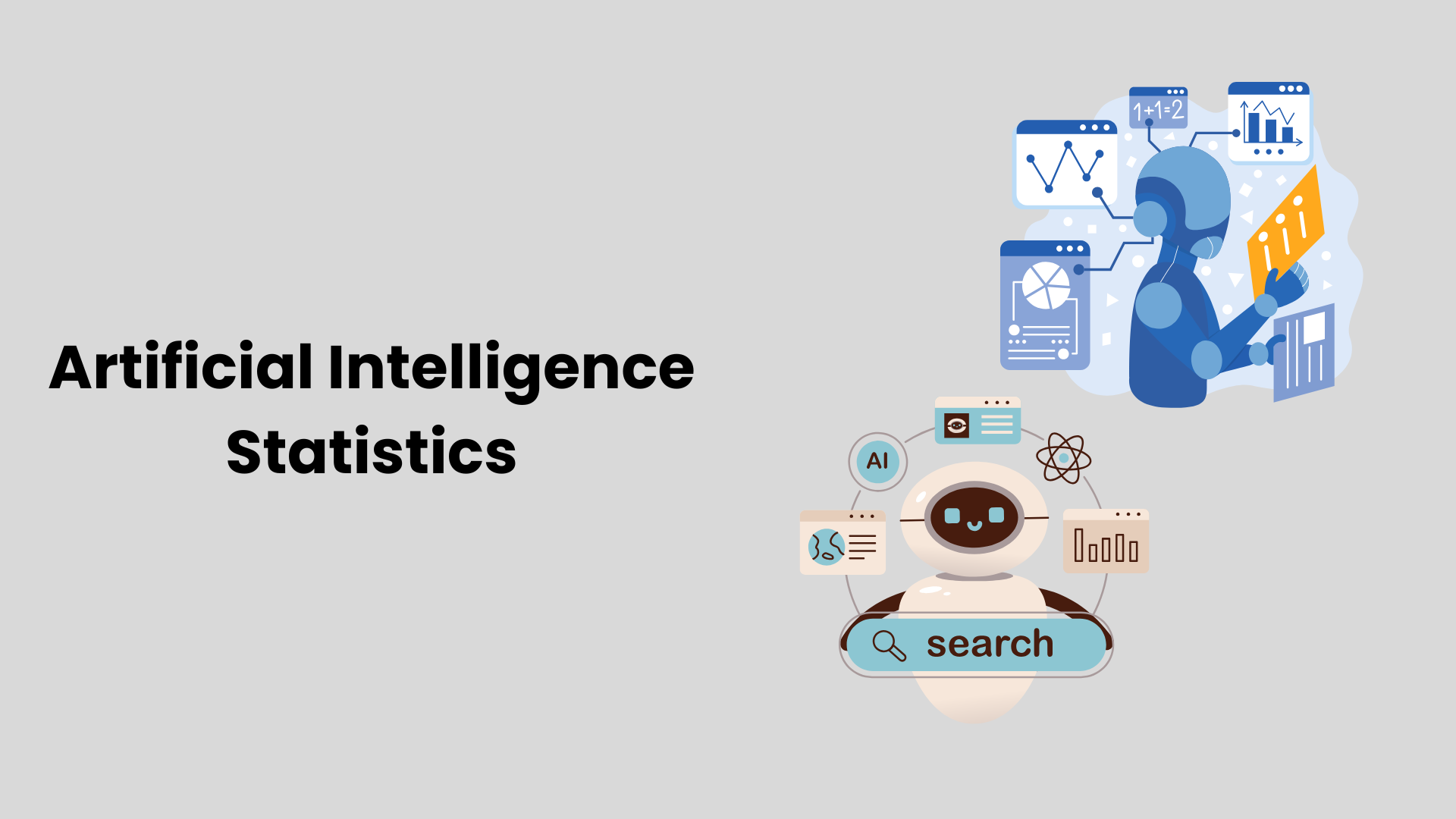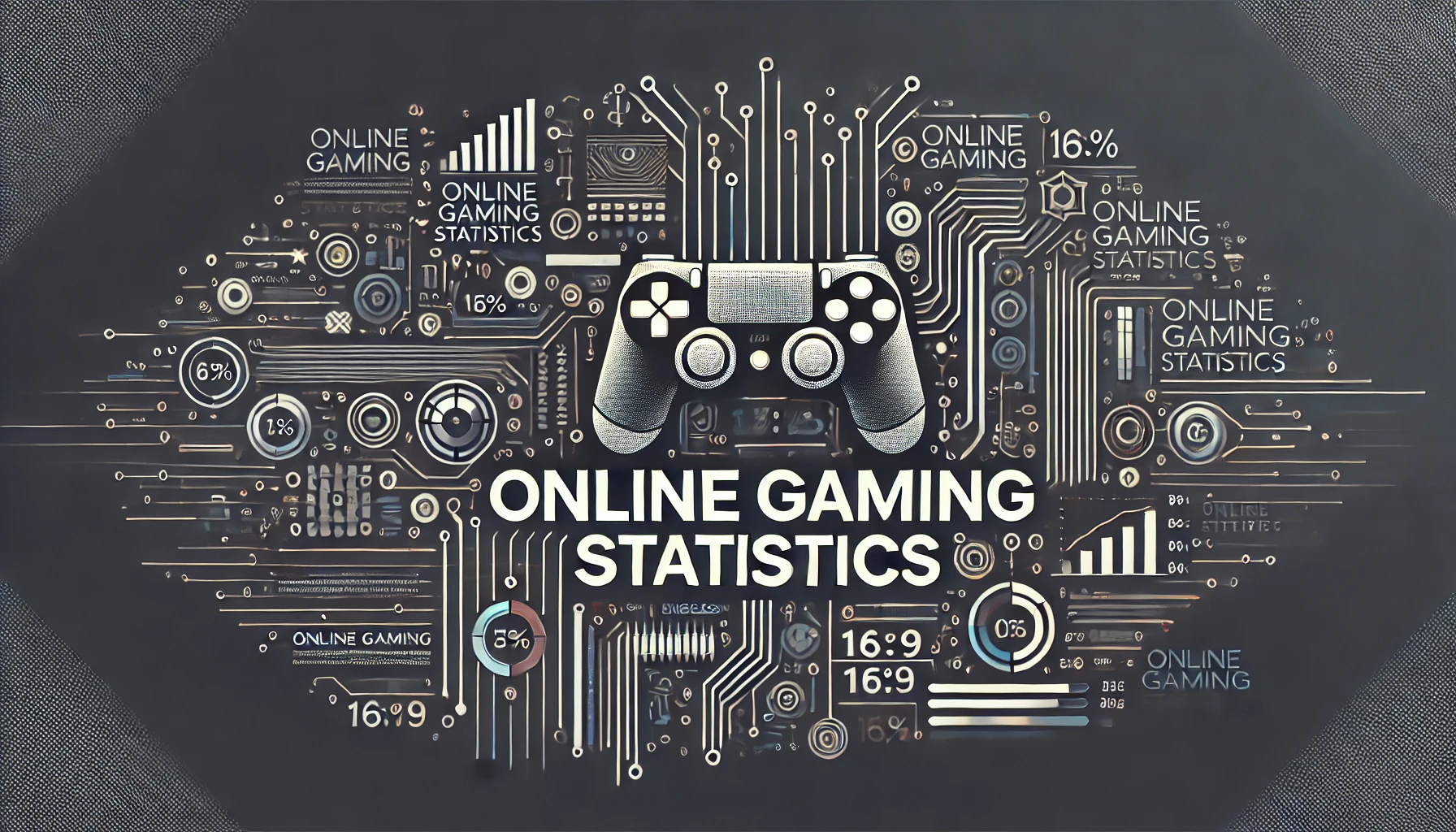WHAT WE HAVE ON THIS PAGE
- Editor’s Choice
- AI Job Replacement Risk by Sector
- Global Job Displacement Numbers Attributed to AI
- Regional Breakdown of AI-Related Job Losses
- How AI Is Changing the Workforce
- AI’s Impact on White-Collar vs. Blue-Collar Employment
- Workforce Demographics Most Vulnerable to AI Replacement
- Will AI Replace Most Human Jobs in the Next 50 Years?
- AI vs. Traditional Automation: Comparative Job Loss Statistics
- Predicted Job Losses vs. Job Creation Through AI Technologies
- AI-Related Job Loss Experiences
- Economic Consequences of AI-Induced Unemployment
- Corporate Adoption Rates of AI and Related Workforce Reductions
- Public Opinion on AI’s Impact on the Job Market
- Government and Institutional Responses to AI-Driven Job Displacement
- Recent Developments in AI and Workforce Trends
- Projected Job Displacement by Automation in 2030
- Conclusion
- Sources
In the winter of 2024, a seasoned logistics manager at a Midwestern warehouse watched as his team’s responsibilities were gradually handed over to an AI-powered system. Within six months, what had been a bustling department of 28 human workers was reduced to just five. Stories like this aren’t isolated—they’re forming a global pattern. Artificial intelligence isn’t just optimizing workflows; it’s replacing them. As we enter 2025, AI-related job loss has moved from speculative headlines to a tangible economic reality. This article explores the current landscape of AI-driven displacement through reliable statistics and insights to help you stay ahead of what’s unfolding.
Editor’s Choice
- 85 million jobs are estimated to be displaced globally by AI and automation by the end of 2025, according to the World Economic Forum.
- In the US, 2.4 million jobs were impacted by AI-driven automation between 2020 and 2024, with another 1.1 million projected to be disrupted in 2025 alone.
- Administrative support and data entry roles have seen a 45% reduction in hiring rates since 2022, heavily influenced by AI deployment.
- A Goldman Sachs report indicates that 18% of global work could be automated by AI, affecting up to 300 million full-time jobs.
- The AI and Machine Learning job market continues to grow, with demand increasing by 41% year-over-year, partially offsetting job loss trends.
- 48% of US companies say they are using AI tools to restructure departments and reduce headcount in 2025.
- In contrast, AI is predicted to create 97 million new roles globally in areas like digital marketing, cybersecurity, and software development by 2025.
AI Job Replacement Risk by Sector
- Administration jobs face the highest risk, with 26% potentially impacted by AI technologies. This sector includes clerical and support functions that are highly automatable.
- Customer service roles are the next most vulnerable, with 20% of jobs at risk. AI chatbots and virtual assistants are rapidly replacing routine interactions.
- Production work shows a 13% risk of being replaced, largely due to automation and robotics in manufacturing environments.
- The legal sector has a 6% job replacement risk. AI is increasingly used for document review and legal research, but human judgment still plays a major role.
- Education roles carry a 5% risk. While AI can assist in content delivery, human interaction remains critical in teaching.
- Jobs in creativity and the arts show a 4% risk. AI tools can aid in content creation, but have limited capacity for original creative thought.
- Management positions are the least threatened, with just a 3% risk. Strategic decision-making and leadership still heavily rely on human capabilities.
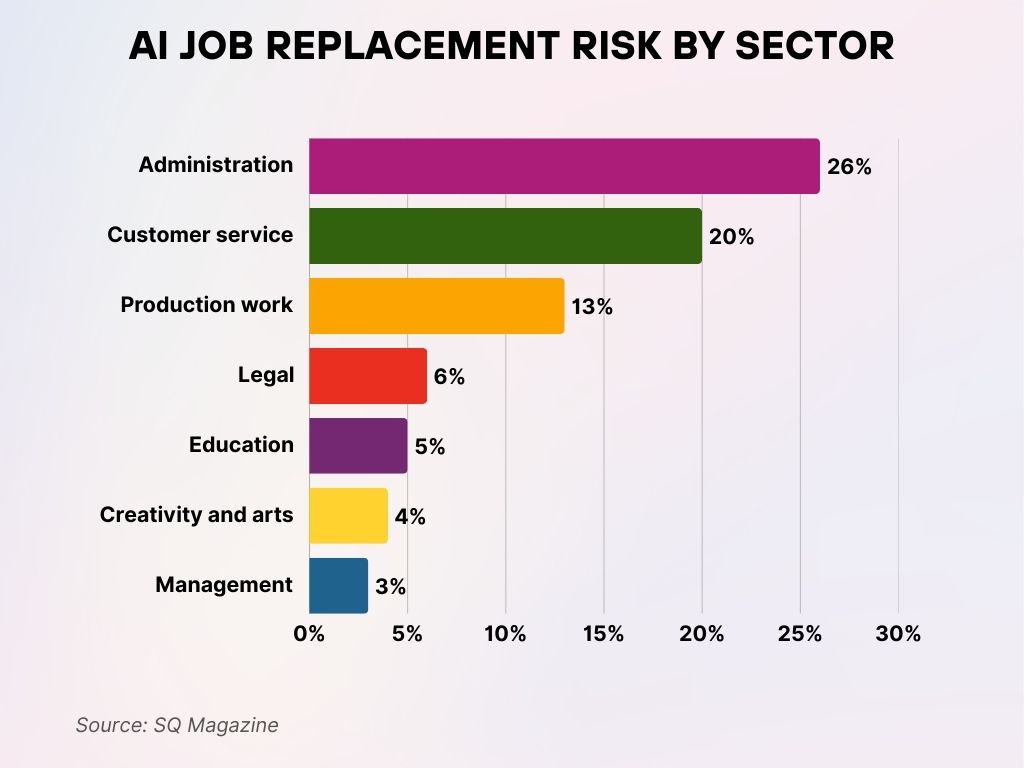
Global Job Displacement Numbers Attributed to AI
- As of early 2025, over 14 million jobs worldwide have already been lost directly due to AI-driven technologies.
- In Asia, automation and AI are expected to displace 21% of current jobs by 2026, with manufacturing being the most affected sector.
- The European Union anticipates 12 million jobs to be either eliminated or fundamentally transformed by AI technologies over the next three years.
- According to the OECD, 27% of jobs globally are at high risk of being automated, with lower-skilled roles most vulnerable.
- The World Bank estimates that 77% of jobs in China are susceptible to automation, many due to AI-enhanced robotics.
- A 2024 McKinsey report found that 800 million jobs could be displaced globally by 2030, with AI being a central force in that transformation.
- The United States saw a 22% increase in AI-induced layoffs from Q4 2023 to Q1 2025, signaling the acceleration of AI’s job impact.
- Latin America reports more modest figures, with an estimated 4.5 million jobs expected to be lost due to AI by 2027, largely in call centers and retail.
- Africa has so far experienced less disruption, but digital labor platforms supported by AI are predicted to reduce traditional employment by 9% in urban areas.
- Automation-driven displacement is most aggressive in countries with advanced IT infrastructure, such as Japan, South Korea, Germany, and the US.
- The United States leads in AI-induced job losses among developed nations, with 1.9 million jobs affected by early 2025.
- In India, AI has displaced over 650,000 IT service jobs, primarily in Tier-1 outsourcing cities like Bengaluru and Hyderabad.
- Germany reported a 17% decline in manufacturing jobs attributed to AI adoption in factories between 2023–2024.
- Japan has implemented robotics at a large scale, resulting in the loss of 490,000 warehouse and assembly line jobs by early 2025.
- In Canada, AI adoption in insurance and banking led to a 12% reduction in back-office roles in 2024.
- South Korea continues to lead in robotics density, with 20% of factory workers being replaced by AI-enhanced automation systems in the past two years.
- Australia reported over 60,000 displaced jobs in customer-facing retail and hospitality due to intelligent service systems.
- In the UK, a Royal Society report noted that AI affected 11% of all full-time roles in 2024 alone.
- Brazil’s booming fintech sector is driving AI adoption, with over 90,000 roles in call centers already automated.
- China has restructured entire logistics supply chains using AI, contributing to over 1.2 million job transitions from manual labor to tech-assisted roles since 2023.
How AI Is Changing the Workforce
- AI could replace up to 300 million full-time jobs globally, highlighting the massive potential of automation on employment markets.
- Generative AI adoption in marketing and advertising is already high, with a significant adoption rate of 37% among professionals.
- 14% of workers report being displaced by robots and automation, showing the real-world effects of emerging tech on job security.
- 77% of businesses are already using or considering AI, indicating widespread organizational reliance on artificial intelligence tools.
- In May 2023, the United States saw 3,900 job losses directly attributed to AI, reflecting its growing role in workforce changes.
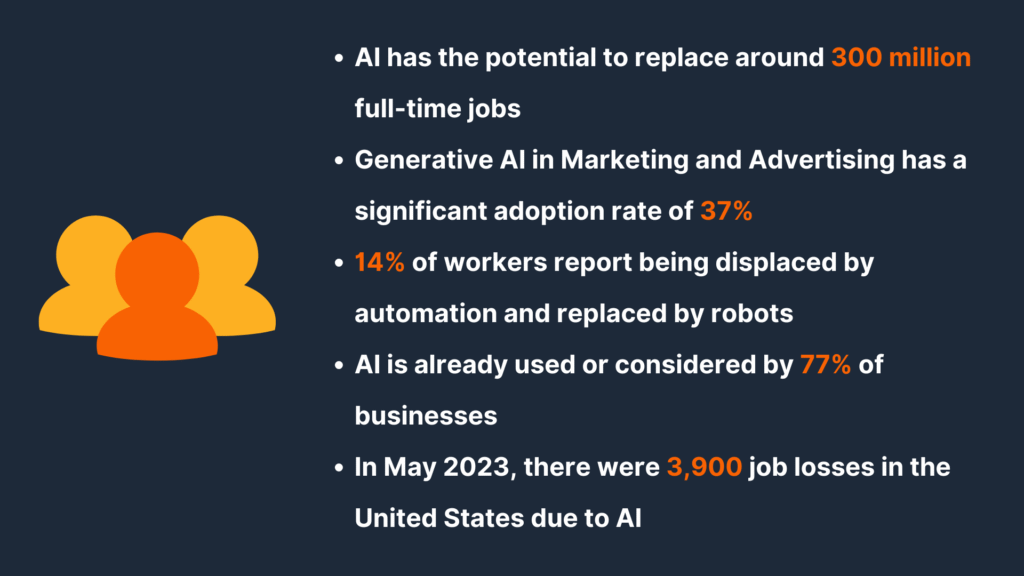
AI’s Impact on White-Collar vs. Blue-Collar Employment
- White-collar workers are increasingly at risk, with 37% of roles in finance, law, and media being susceptible to partial or full automation by AI systems.
- A 2025 Deloitte study found that AI threatens 45% of analytical and clerical roles, including tax preparation, accounting, and underwriting.
- Blue-collar sectors still account for the highest total job losses, but the rate of white-collar displacement is now growing 2.1 times faster than in 2022.
- In healthcare, clinical documentation roles are now automated in nearly 30% of hospitals, impacting administrative personnel more than practitioners.
- AI has reduced entry-level legal assistant jobs by 33% in the US since 2023, mainly through document automation and e-discovery tools.
- In construction, only 7% of roles are currently impacted by AI, as tasks remain heavily physical and environment-dependent.
- Customer-facing roles like loan officers and insurance agents are becoming obsolete, with AI algorithms handling risk analysis and approvals.
- Retail stockroom jobs, considered blue-collar, have seen a 16% drop in demand due to AI-assisted inventory management tools.
- AI-powered diagnostics in radiology and pathology are shifting white-collar medical tasks, affecting early-career specialists especially.
- Tech-related white-collar roles, such as data analysts, are also evolving—while entry-level positions are shrinking, demand for senior AI strategy roles is climbing.
Workforce Demographics Most Vulnerable to AI Replacement
- Workers aged 16–24 face the highest automation risk, with entry-level support roles disappearing at a rate of 19% annually.
- Women in clerical and administrative roles are disproportionately impacted—61% of AI-displaced roles in 2024 were held by women.
- Non-degree holders are 3.5 times more likely to lose their jobs to automation compared to those with a college education.
- Among ethnic groups in the US, Black and Hispanic workers represent 32% of jobs lost to AI, largely concentrated in retail and logistics.
- The disability workforce is also vulnerable: AI systems in fast food and call centers have reduced demand for previously accessible roles.
- Older workers (aged 55+) face challenges in retraining, with only 12% enrolled in AI-transition upskilling programs in 2024.
- Part-time employees have seen a 21% higher displacement rate than full-time staff due to flexible role structures being more automatable.
- Remote roles are more susceptible to AI-driven cuts; AI-based monitoring tools have eliminated thousands of virtual assistant positions in just one year.
- Entry-level marketing jobs, once seen as growth opportunities, have been largely replaced by AI tools like Jasper and Copy.ai in early 2025.
- Workers in rural areas have limited access to retraining resources, making them 60% more likely to remain unemployed after displacement.
Will AI Replace Most Human Jobs in the Next 50 Years?
- 50% of people believe AI will probably take over much of the work currently done by humans within the next 50 years.
- 15% of respondents think AI will definitely replace a large portion of human work in the same timeframe.
- 25% of people responded with probably not, expressing uncertainty or skepticism about AI’s long-term impact.
- Only 7% of participants are confident that AI will definitely not replace significant human labor over the next five decades.

AI vs. Traditional Automation: Comparative Job Loss Statistics
- Traditional automation (e.g., robotics) led to 1.7 million global job losses in 2023, while AI-induced displacement reached 2.4 million the same year.
- AI’s pace of adoption is now 4x faster than industrial robotics during the 2000–2010 period, according to a 2024 MIT study.
- Chatbots and generative AI tools have replaced more human roles in two years than robotic process automation did in the past decade.
- Manufacturing saw consistent losses from traditional automation, but AI is increasingly affecting non-manufacturing sectors like healthcare and finance.
- Traditional automation typically displaced manual labor, while AI now threatens cognitive and analytical tasks, a major shift in scope.
- The cost to deploy AI in business processes is 37% lower than implementing physical automation equipment.
- AI systems are adaptive, unlike traditional machines; this flexibility makes 79% of mid-level cognitive tasks targetable by 2026.
- Traditional automation brought strong productivity gains but required high infrastructure; AI tools are cloud-based and require minimal capital.
- AI also enables cross-industry disruption—one platform can impact multiple sectors simultaneously, unlike task-specific robots.
- AI’s job elimination cycle is now averaging 18 months, whereas traditional automation’s was 4–5 years, per World Bank data.
Predicted Job Losses vs. Job Creation Through AI Technologies
- While 85 million jobs may be lost due to AI, 97 million new ones are projected to be created by 2025, especially in AI development, cybersecurity, and analytics.
- In the US alone, 320,000 AI-related roles were created in 2024, many with salaries exceeding $120,000 annually.
- AI-driven sectors like health tech and edtech are expanding job opportunities at a rate of 26% YoY.
- The cybersecurity market, propelled by AI integration, will create an estimated 3.5 million new jobs globally by 2025.
- However, re-skilling remains a bottleneck—only 36% of displaced workers globally have been able to shift into new AI-influenced roles.
- Companies like Amazon and IBM have invested over $1.2 billion collectively in reskilling programs, focusing on cloud and AI fluency.
- The AI trainer and prompt engineering roles did not exist three years ago but are now among the fastest-growing tech occupations.
- Digital content moderation, redefined with AI assistance, will support over 200,000 hybrid roles worldwide by the end of 2025.
- While low-skill jobs are shrinking, AI-adjacent support roles (like model validators, ethics reviewers, and compliance monitors) are emerging.
- A PwC 2025 projection highlights that AI will drive 14% global GDP growth, creating more economic value than it displaces—if workforce policies keep up.
- 79% of respondents said they have not lost a job or known someone who lost a job due to AI. This indicates the majority haven’t yet felt a personal impact.
- 11% of people reported that they personally lost a job because of AI, showing a direct effect on a notable minority.
- 10% said someone they know lost a job due to AI, suggesting indirect exposure to AI-related layoffs is also growing.
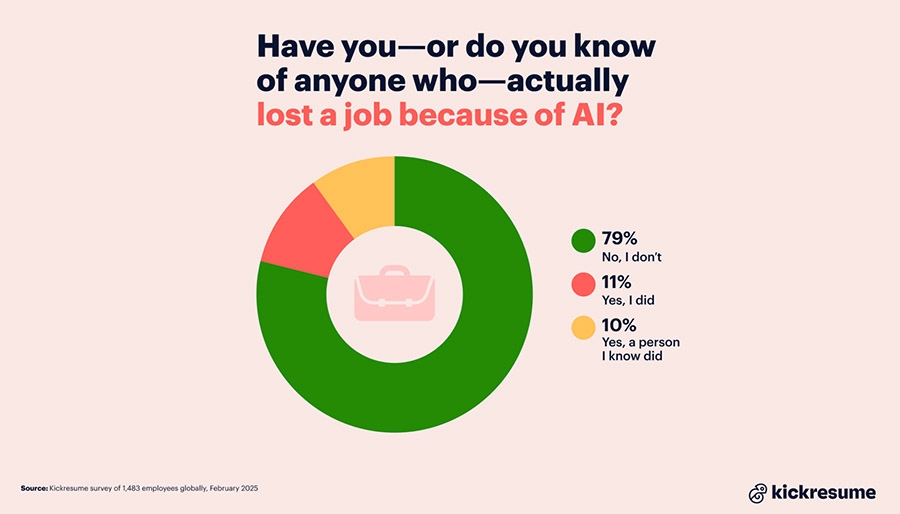
Economic Consequences of AI-Induced Unemployment
- Global unemployment linked to AI-driven automation is expected to reach 7.8% in 2025, up from 6.3% in 2023.
- In the US, economic output loss due to workforce reduction is estimated at $216 billion over the next 24 months.
- AI-related layoffs contribute to a 2.1% dip in consumer spending, especially in retail, transportation, and hospitality.
- Countries lagging in reskilling efforts face slower recovery; South Africa’s GDP growth could shrink by 0.8% annually due to underemployment.
- Job polarization is widening—high-skill and low-skill roles are growing, but middle-income jobs are disappearing, according to the Brookings Institution.
- Social safety net spending in the EU has increased by €18 billion between 2022 and 2024 in response to tech-driven unemployment.
- Mental health claims among displaced workers have risen by 22% in the US, with job loss due to automation being a key factor.
- Gig economy dependency has surged—over 9.1 million Americans turned to freelance platforms in 2024 after AI-related layoffs.
- Real estate markets in industrial towns affected by automation have seen up to 11% depreciation in commercial value.
- Companies automating large segments of staff without retraining investment are experiencing a brand trust by 23%, impacting long-term valuation.
- As of Q1 2025, 61% of Fortune 500 companies report implementing AI in at least one major operational department.
- Microsoft, Amazon, and Google reduced a combined total of 49,000 roles since 2023, citing AI efficiency improvements.
- In the banking sector, 7 of the top 10 global banks have integrated AI tools for underwriting, leading to a 32% reduction in credit analyst positions.
- Retail giants like Walmart and Target automated back-end operations, resulting in over 28,000 jobs eliminated in logistics and inventory management.
- A Gartner report reveals that 45% of companies are restructuring their workforce in 2025 as a direct result of AI tool adoption.
- In the telecommunications sector, AI has replaced 14% of network management roles, especially with predictive maintenance algorithms.
- IBM’s WatsonX platform alone contributed to 9,000 workforce reductions in departments reliant on manual analytics.
- HR departments across industries are streamlining talent acquisition with AI, reducing human recruiters by 38% since 2022.
- Startups and SMEs are adopting AI at scale, with 38% reporting automation of at least one customer-facing role by early 2025.
- Companies investing in AI retraining initiatives are 25% less likely to experience long-term revenue dips from workforce transitions.
Public Opinion on AI’s Impact on the Job Market
- 47% of people believe AI will have a positive impact, creating more jobs than it destroys, showing optimism about future opportunities.
- 26% think AI will have a negative effect, as it may eliminate more jobs than it generates, highlighting growing concerns about displacement.
- Another 26% say it’s too soon to tell, reflecting uncertainty about how AI will ultimately reshape employment dynamics.
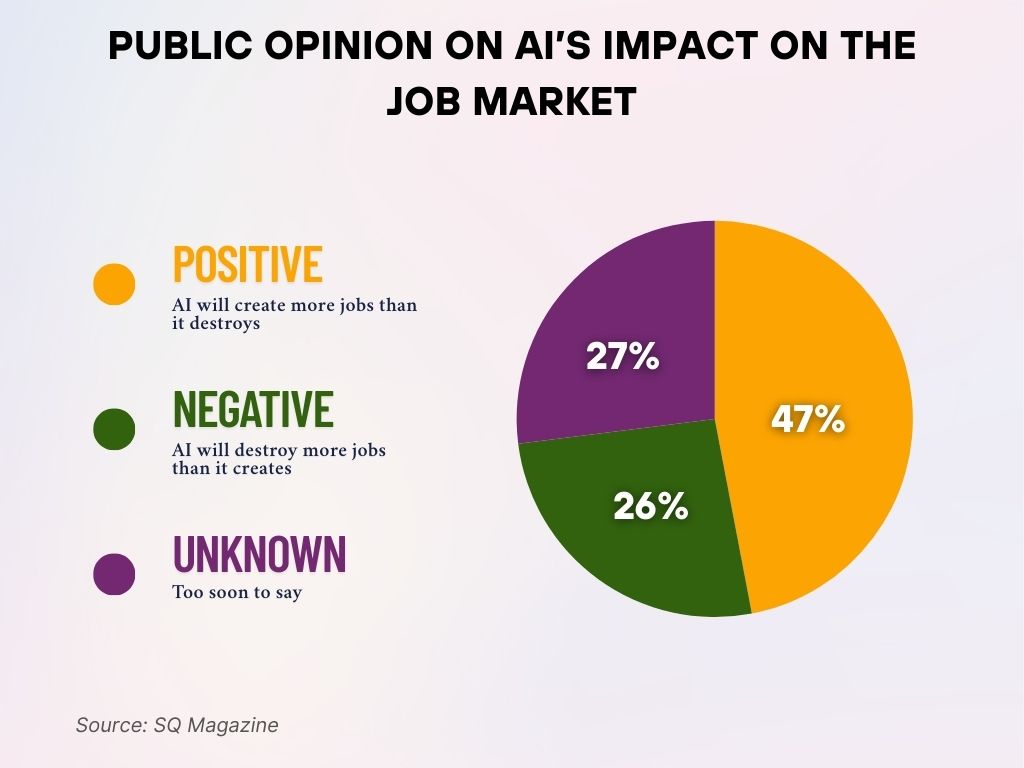
Government and Institutional Responses to AI-Driven Job Displacement
- In 2025, the US Department of Labor allocated $1.3 billion for workforce reskilling focused on AI-displaced workers.
- The European Union passed the AI Liability Directive, holding companies accountable for algorithmic displacement without mitigation efforts.
- Singapore’s government introduced tax incentives for companies that retrain more than 10% of their staff in AI-related roles.
- Germany launched “AI UpSkill 2030”, pledging €4.5 billion to help transition manufacturing workers into tech-centric roles.
- India’s NITI Aayog established AI education frameworks in over 800 universities and technical colleges to future-proof its young workforce.
- Canada developed a national AI registry to monitor corporate AI deployments and their effect on job markets.
- The International Labour Organization (ILO) called for a global summit on “Equitable AI Transitions,” scheduled for Q4 2025.
- In the US, five states have introduced “AI severance bills”, requiring mandatory financial compensation for AI-induced layoffs.
- Public-private partnerships in the Netherlands and Sweden have created over 120,000 new tech apprenticeship roles tied to AI disruption.
- South Korea’s “Robot Tax”, introduced in 2024, aims to slow excessive automation and fund unemployment insurance programs.
Recent Developments in AI and Workforce Trends
- OpenAI’s ChatGPT-5, released in early 2025, is driving a new wave of automation in legal, marketing, and customer service sectors.
- Google DeepMind introduced Gemini Pro, which is now integrated into enterprise-level decision-making software across 4,000+ firms.
- AI-generated content now represents 12% of all published digital text, up from just 4% in 2023, displacing content creation roles.
- The use of robotic process automation (RPA) combined with generative AI has increased efficiency in banking operations by 28%, reducing staff needs.
- In Q1 2025, over 38% of US job applications were screened solely by AI systems without any human review.
- Amazon’s AI-powered warehouse management system now operates with 75% fewer human workers per fulfillment center compared to 2020.
- AI-driven business forecasting tools are being used in 72% of Fortune 1000 companies, affecting roles in strategic planning and analysis.
- Startups focusing on AI for HR and hiring grew by 63% YoY, indicating an accelerating shift toward algorithmic workforce management.
- Meta and Salesforce both adopted “AI-first” HR departments, replacing traditional employee engagement teams with data-led systems.
- In education, AI tutors and grading assistants are deployed in over 300 US school districts, reducing support staff needs.
Projected Job Displacement by Automation in 2030
- China is expected to face the largest impact, with 47.8% of job displacement due to automation by 2030.
- India follows with 24.3% of jobs potentially eliminated, reflecting significant automation growth in its labor market.
- The United States may see 14.8% of jobs displaced, showing notable vulnerability among advanced economies.
- Japan could lose 6.1% of its jobs to automation, despite its already high-tech workforce.
- Mexico is projected to experience 3.6% job displacement, while Germany is slightly lower at 3.4%, indicating more limited disruption in these regions.
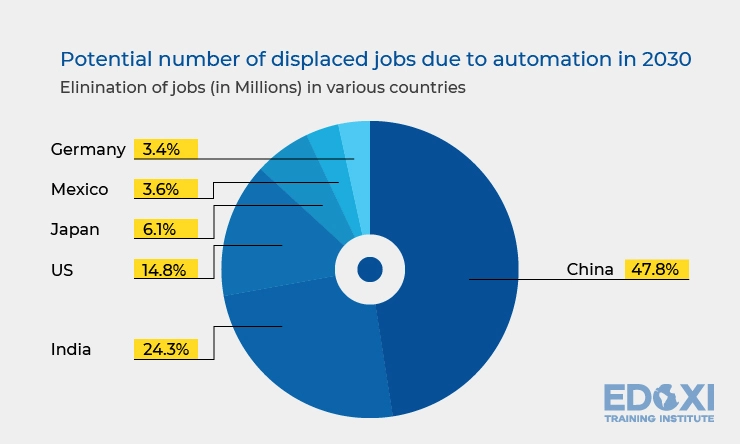
Conclusion
Artificial intelligence has transitioned from a speculative disruptor to a fundamental force reshaping labor markets in 2025. From retail to legal, white-collar to blue-collar, few sectors remain untouched. While AI promises efficiency and cost savings, its real-time impact on employment is profound and widespread. Yet, the story isn’t purely one of loss—it’s also about transformation. New roles are emerging, and institutions are beginning to take bold steps toward upskilling and policy reform. The urgency now lies in strategic adaptation. For businesses, workers, and policymakers alike, the challenge is not just to survive AI disruption, but to evolve with it.
Sources
- https://www.statista.com/site/insights-compass-ai-future-ai-work
- https://www.mckinsey.com/featured-insights/future-of-work/jobs-lost-jobs-gained-what-the-future-of-work-will-mean-for-jobs-skills-and-wages
- https://digitalcommons.odu.edu/cgi/viewcontent.cgi?article=1084&context=covacci-undergraduateresearch
- https://edition.cnn.com/2025/01/08/business/ai-job-losses-by-2030-intl/index.html
- https://www.forbes.com/sites/bryanrobinson/2025/02/09/fears-about-ai-job-loss-new-study-answers-if-theyre-justified/
- https://www.pwc.com/gx/en/issues/artificial-intelligence/ai-jobs-barometer.html


